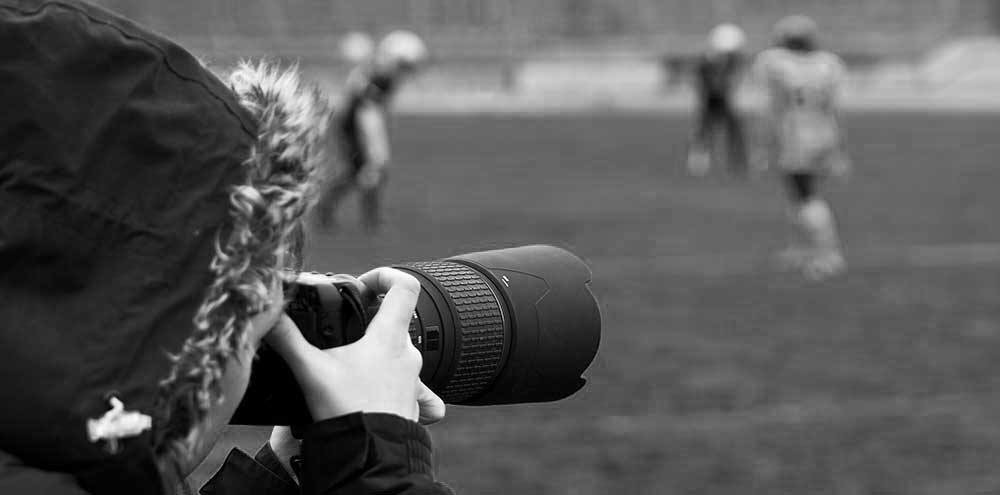
How to Become a Sports Photographer: A Comprehensive Guide
Sports photography is an exhilarating field that allows you to capture the intensity, emotion, and beauty of athletic competitions. Whether you dream of shooting for major leagues or local teams, this guide will help you get started on your journey to becoming a sports photographer.
1. Master the Basics
Before diving into sports photography, it's crucial to have a solid foundation in photography fundamentals:
- Composition: Learn the rule of thirds, leading lines, and framing techniques to create visually appealing images.
- Exposure: Understand the exposure triangle (aperture, shutter speed, ISO) and how to balance these elements for sharp, well-exposed shots.
- Focusing techniques: Master manual focus and various autofocus modes, which are crucial for capturing fast-moving subjects.
- Camera settings: Familiarize yourself with your camera's settings, particularly burst mode, continuous autofocus, and back-button focus.
Practice these skills regularly, even outside of sports events, to build muscle memory and intuition.
2. Invest in Gear
While skill is more important than equipment, having the right tools can significantly enhance your capabilities:
- Camera body: Invest in a DSLR or mirrorless camera with fast autofocus and high frame rates (at least 8-10 fps).
-
Lenses:
- 70-200mm f/2.8: A versatile lens for most sports
- 300mm f/2.8 or longer: For distant subjects in outdoor sports
- 24-70mm f/2.8: For wider shots and close action
- Memory cards: Fast, high-capacity cards to handle burst shooting
- Monopod: To support heavy lenses during long events
- Weather protection: Covers for your gear in case of rain or harsh conditions
Remember, you can start with entry-level gear and upgrade as you progress and earn money from your work.
3. Study Sports
Understanding the sports you're photographing is crucial for capturing key moments:
- Learn the rules, strategies, and flow of various sports.
- Study the movements and techniques of athletes.
- Anticipate key moments, like a basketball player's jump shot or a soccer goalkeeper's dive.
- Familiarize yourself with the layout of different sports venues and ideal shooting positions.
Consider focusing on one or two sports initially to develop expertise before branching out.
4. Practice, Practice, Practice
There's no substitute for hands-on experience:
- Start by shooting local high school or amateur league games.
- Experiment with different angles, positions, and techniques.
- Try to tell a story with your images – capture not just the action, but the emotion and atmosphere of the event.
- Review your work critically after each shoot and identify areas for improvement.
- Set personal challenges, like capturing a specific type of shot in each game.
Remember, every professional started as a beginner. Consistent practice is key to improvement.
5. Develop Your Editing Skills
Post-processing is an essential part of modern sports photography:
- Learn to use editing software like Adobe Lightroom and Photoshop.
- Develop a consistent editing style that enhances your images without over-processing.
- Practice quick editing workflows for fast turnaround times, which are often necessary in sports photography.
- Learn to crop effectively to improve composition and focus on the key elements of your shots.
- Understand how to prepare images for different mediums (print, web, social media).
6. Network and Build Relationships
Success in sports photography often depends on who you know:
- Attend local sports events and introduce yourself to organizers, coaches, and other photographers.
- Join photography clubs or associations in your area.
- Offer to shoot events for free or at a discount to build your portfolio and relationships.
- Be professional, reliable, and easy to work with – your reputation is crucial in this field.
- Consider assisting established sports photographers to learn and make connections.
7. Create an Online Presence
In today's digital age, an online portfolio is essential:
- Build a professional website showcasing your best work.
- Use social media platforms like Instagram, Twitter, and Facebook to share your photos and connect with potential clients.
- Learn basic SEO techniques to make your website more discoverable.
- Engage with the sports photography community online, sharing tips and seeking advice.
- Consider starting a blog to share your experiences and attract potential clients.
8. Seek Opportunities
Start small and gradually work your way up:
- Approach local newspapers, sports websites, or school athletic departments.
- Offer to cover events for local sports teams or leagues.
- Look for internships or entry-level positions with sports media companies.
- Submit your work to stock photography sites specializing in sports.
- As you gain experience, start pitching to larger publications or agencies.
9. Stay Current
The field of sports photography is constantly evolving:
- Keep up with the latest camera technology and software updates.
- Follow industry blogs, podcasts, and YouTube channels for tips and inspiration.
- Attend workshops or webinars to learn new techniques and network with peers.
- Stay informed about trends in sports photography and the sports industry in general.
- Continuously refine and update your skills to stay competitive.
10. Be Patient and Persistent
Becoming a successful sports photographer takes time and dedication:
- Set realistic goals and celebrate small victories along the way.
- Don't get discouraged by rejection – it's a normal part of the process.
- Learn from your mistakes and the feedback you receive.
- Be prepared for long hours and irregular schedules, especially when starting out.
- Remember why you love sports photography and let that passion drive you forward.
By following these steps and maintaining your enthusiasm and work ethic, you'll be well on your way to a rewarding career in sports photography. Remember, every great sports photographer started somewhere – with dedication and persistence, you can turn your passion into a profession.